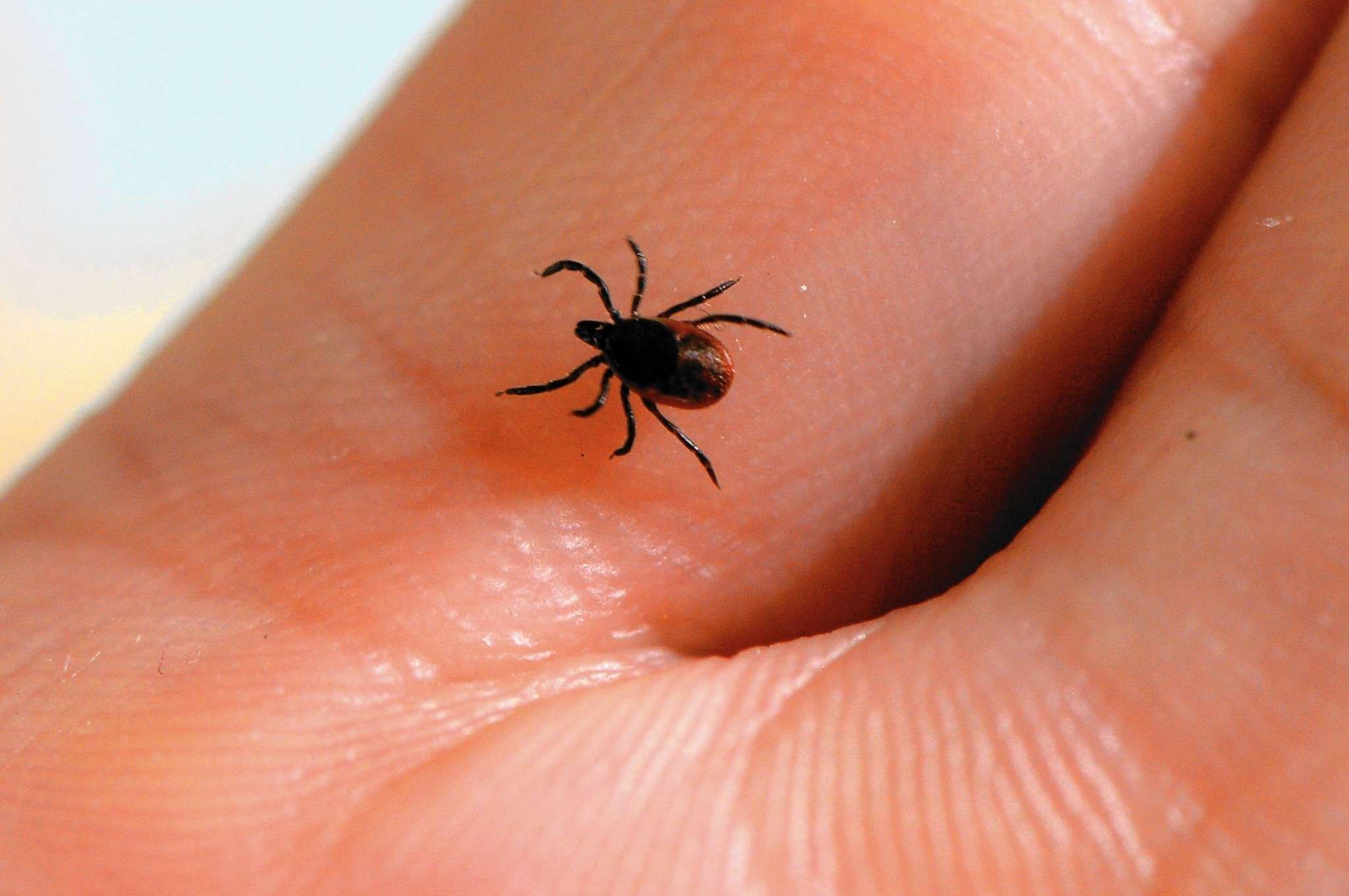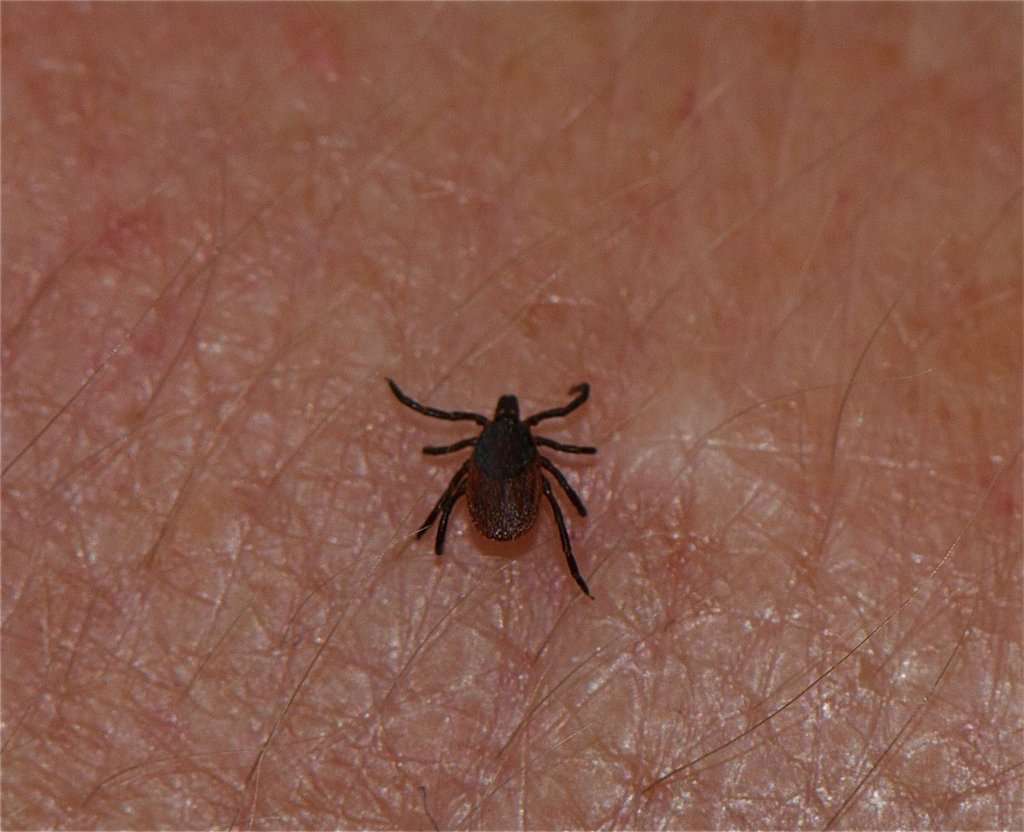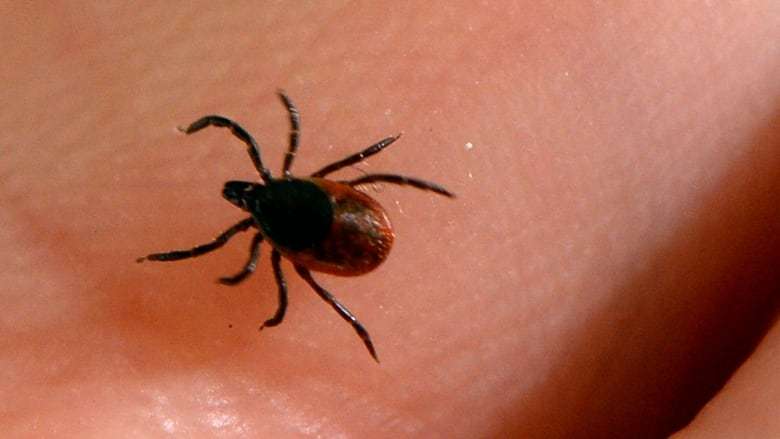Rocky Mountain Wood Tick
Description: The Rocky Mountain wood tick is reddish-brown like an American dog tick, but its slightly larger in size and shape. Females have silver-gray shields on their backs.Location: They are typically found in the Rocky Mountain states and Southwestern Canada at higher elevations of 4,000 to 10,500 feet.Diseases: Rocky Mountain spotted fever, Colorado tick fever, tularemia, tick paralysisHabitat: Along trails, lightly-wooded areas, grasslands, and shrublands
Where Do We Find Ticks
Generally, you can find ticks where the animals they feed on live. This usually includes wooded and grassy areas. An adult tick quests for its next blood meal by climbing up grasses and bushes to wait for an animal to pass by. Nymphs and larvae are typically found in layers of decomposing leaves underneath trees. Ticks thrive in damp environments and are less active in hot, dry weather.
Sign Up For Our Newsletter
Disclaimer: The above material is provided for information purposes only. The material is not nor should be considered, or used as a substitute for, medical advice, diagnosis, or treatment, nor does it necessarily represent endorsement by or an official position of Global Lyme Alliance, Inc. or any of its directors, officers, advisors or volunteers. Advice on the testing, treatment or care of an individual patient should be obtained through consultation with a physician who has examined that patient or is familiar with that patients medical history. Global Lyme Alliance, Inc. makes no warranties of any kind regarding this Website, including as to the accuracy, completeness, currency or reliability of any information contained herein, and all such warranties are expressly disclaimed.
You May Like: Lyme Disease And Liver Damage
There Are Many Different Types Of Ticks
There are over 850 species of ticks worldwide, and although nearly all of them feed on the blood of other animals, not all of them transmit Lyme disease. According to Hackensack Meridian Health, the main ticks that spread Lyme disease are called Ixodes ticks.
Two distinct species of ticks from the U.S. carry Lyme disease, and the most common of those is called Ixodes scapularis, aka the deer tick. Deer ticks primarily live in the northeast and northern parts of the midwest. They tend to spread Lyme disease more frequently than the other species, Ixodes pacificus or the western blacklegged tick, which is commonly found throughout the Pacific Northwest.
Prevention And Control Of Ticks Around The Home

Make sure the property around your home is unattractive to ticks. Because ticks are sensitive to dry conditions and do not thrive in short vegetation, they are seldom a problem in well-maintained lawns. Keep your grass mowed and keep weeds cut. Clean up items that attract rodents which can carry ticks, such as spilled birdseed, and hiding places like old wood piles. If ticks are present in vegetation along the edge of the property, insecticides labeled for control of ticks can be applied to small areas of high weeds that cannot be mowed. Often, one or two applications per season will be adequate to control ticks in these areas.
Free-roaming dogs and cats are much more likely to encounter ticks than those that are confined to the home or yard. If ticks are found on pets, contact your veterinarian for information about an appropriate tick treatment. Remove the occasional tick found indoors by vacuuming, seal the vacuum bag and place it in the trash. Owners of kennels or homes infested with the brown dog tick may wish to contact a professional pest control company for assistance.
Don’t Miss: Main Symptoms Of Lyme Disease
Which Ticks Should I Worry About
Nymphal ticks cause most cases of Lyme disease. Because nymphs are as small as poppy seeds and their bite is painless, people often dont realize they have been bitten. Adult ticks can also infect humans, but are easier to spot and remove.
Not all ticks are infected. Because tick studies have only been done in a relatively few places, in most of the US, tick infection rates are unknown. Even in places where ticks generally do not carry Lyme, there may be hotspots of infection depending on local conditions. The tick infection rate may also change from year to year, even in one location.
To get a better idea of which tick-borne diseases have been found in your area, check this site.
What Are The Symptoms Of Lyme Disease
The list of possible symptoms is long, and symptoms can affect every part of the body. The following are the most common symptoms of Lyme disease. But symptoms are slightly different for each person.
The primary symptom is a red rash that:
-
Can appear several days after infection, or not at all
-
Can last up to several weeks
-
Can be very small or grow very large , and may resemble a “bulls-eye”
-
Can mimic such skin problems as hives, eczema, sunburn, poison ivy, and flea bites
-
Can itch or feel hot, or may not be felt at all
-
Can disappear and return several weeks later
Several days or weeks after a bite from an infected tick, you may have flu-like symptoms such as the following:
-
Headache
-
Swollen glands
Weeks to months after the bite, the following symptoms may develop:
-
Neurological symptoms, including inflammation of the nervous system and weakness and paralysis of the facial muscles
-
Heart problems, including inflammation of the heart and problems with heart rate
-
Eye problems, including inflammation
Months to a few years after a bite, the following symptoms may include:
-
Inflammation of the joints
-
Neurological symptoms including numbness in the extremities, tingling and pain, and difficulties with speech, memory, and concentration
Don’t Miss: Can Lyme Disease Cause Weight Loss
I Found Out It Was A Deer Tick That Bit Me What Should I Do Now
If a deer tick bit you, one dose of an antibiotic called doxycycline can prevent Lyme disease if:
- you live in an area where there is a lot of Lyme disease
- the tick was probably attached to you for more than 36 hours
- the tick was removed in the last 3 days
Doxycycline should not be given to pregnant or breastfeeding women or to anyone allergic to doxycycline. If a tick bit you, ask your doctor if you should take doxycycline to prevent Lyme disease.
Is there anything I should look for after a tick bite?
After a tick bite, be on the look-out for signs of infection. The first sign of Lyme disease is usually a gradually enlarging, round or oval red discoloration of the skin surrounding the bite. The rash is usually neither painful nor itchy. Once the infection spreads, the same rash can be seen on other areas of the body. Other symptoms of infection may include:
- facial droop
- fever
- body aches.
Late manifestations of Lyme include swollen joints, and rarely neurologic problems like severe headaches. Lyme at any stage is treatable with a set course of antibiotics, typically two weeks and rarely more than a months duration.
What Are The Roles Of Other Animals In Lyme Disease Transmission
| Deer are not directly involved with Lyme disease transmission. However, they are the preferred host of the adult blacklegged tick and are therefore important in maintaining tick populations. |
| Dogs are susceptible to tick bites and tickborne diseases like Lyme disease. Lyme disease infections in dogs are not a significant risk factor for human infection because dogs are considered “dead-end” hosts for the bacteria . However, dogs can bring infected ticks into the home. |
| Rodents, especially deer mice and white-footed mice are important hosts for Lyme disease pathogens. Juvenile ticks become infected with Lyme disease bacteria when they feed on infected mice. The ticks may then pass the infection on to future hosts, including humans and pets. |
| Ticks, specifically the blacklegged tick, Ixodes scapularis, acquire Lyme disease bacteria from rodents. |
Recommended Reading: Dr Nader Soliman Lyme Disease
What Causes Lyme Disease
Lyme disease is caused by bacteria that is spread to humans by tick bites. The ticks that carry the spirochete are:
-
Black-legged deer tick
-
Western black-legged tick
Ticks prefer to live in wooded areas, low-growing grasslands, and yards. Not all ticks carry the Lyme disease bacteria. Depending on the location, anywhere from less than 1% to more than 50% of the ticks are infected with it.
While most tick bites are harmless, several species can cause life-threatening diseases. Tick-borne diseases include:
-
Rocky Mountain spotted fever
Which Ticks Are Carrying Lyme Disease And How To Avoid Them
“The percentage of ticks that are infected and can cause you problems depends on where you are,” says Andrew Hebda, Curator of Zoology at the Nova Scotia Museum.
Hebda is also an entomologist — someone who studies bugs, insects and arachnids like ticks.
According to Hebda, Nova Scotia now has 14 species of ticks, but only one is dangerous: the blacklegged tick.
“So, knowing which species you have is important,” he says. “But even if you’re in an area where Lyme is present, the disease is not present in all of the blacklegged ticks, it’s only in a set percentage.”
This varies based on which part of the province you’re in. For example, Hebda says about 22 to 24 per cent of blacklegged ticks in the Bedford Basin area carry Lyme disease, while the number is much higher is you travel to the New Glasgow area of the province.
Blacklegged ticks were brought to the province by birds, Hebda says, and are slowly spreading via animals they latch onto.
“They don’t walk far,” he explains. “They will climb up vegetation like grass or shrubs. A passing animal will dislodge them and they will grab onto that animal.”
If the animal is small, like a field mouse, the tick will only travel a few metres. But if it latches onto a deer or other larger species, it could travel much further.
“Each place that the birds brought them in and they were established, and reproducing, that acts as the centre of a circle and they radiate out from that,” Hebda tells NEWS 95.7’s The Todd Veinotte Show.
Recommended Reading: How Do You Know If A Tick Has Lyme Disease
How To Remove A Tick
Removing a tick is the same for humans and animals. Its important you do not crush or damage the tick because it could cause Lyme bacteria to pass from the tick into your bloodstream.
How to remove a tick.
Also Check: Lyme Literate Doctors Los Angeles
What Is The Risk Of Encountering A Tick Infected With Lyme Disease In Pei

PEI is considered a low risk area for Lyme disease. Of the ticks that can be found on PEI, only the blacklegged tick can carry the Lyme disease causing bacterium, B. burgdorferi. It is possible to encounter a blacklegged tick infected with the Lyme bacteria so it is important to follow prevention measures. In 2020 through passive surveillance, there were seventy two tick samples submitted to the PEI lab. Forty nine of these were Ixodes scapularis, and three of these ticks tested positive for Borrelia burgdorferi. Although these ticks were taken from a person while they were in PEI, it is possible some ticks may have been carried to PEI during travel.In 2019 The Canadian Lyme Disease Research Network launched a pan-Canadian sentinel surveillance initiative, the Canadian Lyme Sentinel Network . The goal was to use standardized methods of performing active tick surveillance across the country to get a complete picture of tick populations in Canada. In the summer of 2019 , a systematic drag sampling protocol was performed in various sites across the country. The ticks collected were identified for species and were also tested for tick borne diseases including the bacteria that cause Lyme disease. Five sites with suitable tick habitats were chosen within a 25 mile radius of Charlottetown in PEI. Two of the drag sites produced one tick each. One nymph and one adult were found and neither was carrying a tick borne disease. The complete article can be found online.
Also Check: Washington Dc Lyme Disease Specialist
Which Tick Carries Lyme Disease
Steven Ellingson/Shutterstock.com
In the United States, the Lyme disease-causing bacteria Borrelia burgdorferi and Borrelia mayonii are carried by the black-legged, or deer tick species. But how can you tell if a tick is a deer tick, and how can you prevent picking up one? And what are the warning signs and symptoms of Lyme disease? Let us get into it!
Should I Have The Tick Tested For Lyme Disease
No, testing a tick for Lyme disease is not helpful. It is usually not the tick you find, but the tick that you dont find that gives you Lyme. A tick that tests negative for Lyme may only give you false assurance. If you live somewhere with Lyme disease, it is best to assume that the deer tick that bit you is infected and can spread the infection.
Don’t Miss: Lyme Center Of New England
How Big Are Ticks
In my mind, a tick is about the size of an apple seed. But, this is only true if it is an adult tick. Nymphs are about the size of poppy seeds and larvae are about the size of a grain of sand.
Most people with Lyme disease are bitten by the poppy-seed size of ticksthe nymphs. Adult ticks also carry the bacteria, but these apple-seed-sized ticks are much easier to see and remove .
How Can Lyme Disease Be Prevented
In areas where ticks are found, people should know about the risk of Lyme disease and should take precautions to protect themselves. Be aware of the signs and symptoms of Lyme disease so it can be detected and treated promptly. PHAC states that removing ticks within 24 to 36 hours after the tick bite usually prevents infection.
PHAC has also prepared a Lyme disease tool kit which provides material to raise awareness and educate.
Read Also: Whats Lyme Disease In Humans
Use Insect Repellents No Matter What Ticks Carry Lyme Disease
Sometimes, wearing the right clothes and checking for ticks often just dont cut it. One more way to prevent ticks from sticking to you is using repellents. For this, you have two options: you can use DEET products or products with permethrin. The former is more gentle preventing ticks from latching without killing them. However, they are not guaranteed to work 100% of the time. Products with permethrin kill ticks but are pretty harsh on the user. The latter, on the other hand, is more aggressive. If you opt for this solution, avoid spraying directly on your skin.
Lyme Disease Signs And Symptoms
Most symptoms of Lyme disease in humans usually appear between three and 30 days after a bite from an infected blacklegged tick.
You should contact your local public health unit or speak to a health care professional right away if you have been somewhere that ticks might live and experience any of the following symptoms:
- rash
- a bulls-eye rash (a red patch on the skin that is usually round or oval and more than 5 cm that spreads outwards and is getting bigger
- a bruise-like rash
- another type of unusual rash
- muscle aches and joint pains
- fatigue
- swollen lymph nodes
- spasms, numbness or tingling
- facial paralysis
If not treated, Lyme disease can make you feel tired and weak and, if it gets really bad, it can even harm your heart, nerves, liver and joints. Symptoms from untreated Lyme disease can last years and include recurring arthritis and neurological problems, numbness, paralysis and, in very rare cases, death.
Also Check: Lyme Disease Specialist Raleigh Nc
Can I Get Lyme Disease By Eating Deer Meat
- Deer are important in the deer tick life-cycle, but deer do not get Lyme disease.
- People cannot get Lyme disease by eating deer meat. However, deer meat should always be properly cooked. Cooking deer meat properly is important to prevent other infections such as E. coli.
- Caution should be taken while hunting and dressing deer, since ticks may travel or fall off the deer and have access to you. Ticks also have access to your yard to lay eggs while dressing or hanging a deer. You can take precaution by using a permethrin treated tarp in your truck during transport of a deer and under a deer hanging in your yard.
About Ticks And Lyme Disease

Ticks are small crawling bugs in the spider family. They are arachnids, not insects. There are hundreds of different kinds of ticks in the world. Many of them carry bacteria, viruses or other pathogens that cause disease in humans and/or animals.
In the midwestern and eastern United States, Ixodes scapularis or deer tick is the primary vector of Lyme disease. On the West Coast, the spirochete is carried by Ixodes pacificus or western black-legged tick. In the South, lone star ticks can also transmit Lyme disease or a closely related illness.
Ticks have four life stages: egg, larva, nymph and adult. In each stage after hatching, they suck blood from animals like mice, squirrels, birds and deer. Then they drop off, enter a dormant period and molt to enter the next stage.
Ticks dont start out being infected with Lyme. They get it by feeding on an infected animal, often a mouse or other small rodent. Then, they pass it along to the next animal or person they bite.
Don’t Miss: Old Lyme Ct School Calendar